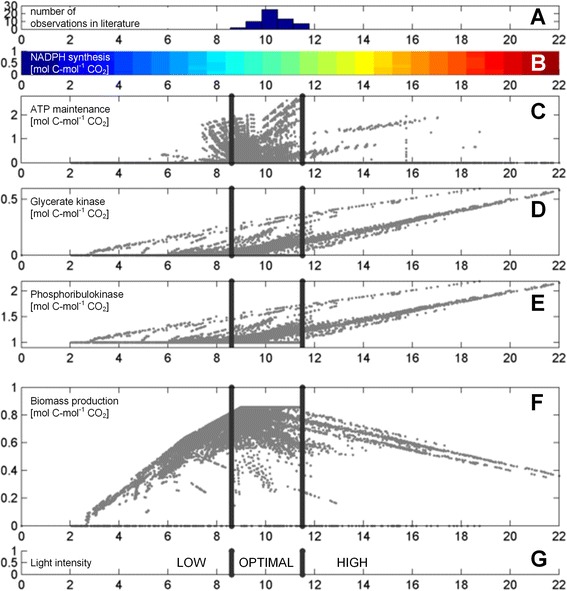Fig. 3.

Light quantum requirement for plant growth. Histogram of the quantum yield values for C3 plants under ambient atmospheric conditions (a). The values were taken from previous work [43], which reviewed the in vivo range of the quantum yield in C3 and C4 plant lineages. Not all harvested quanta are converted into chemical energy as some are lost through absorption by pigments, which are unable to contribute their excitation energy to photosynthesis. Therefore, the nominated range was corrected assuming 47 % of photons are outside the photosynthetically active range [44]. The linear relationship between modelled NADPH synthesis and quantum requirement is visualized as a color scale between blue (low) and red (high) (b). Modeled ATP maintenance production associated with the observed light influx (c). Modeled glycerate kinase activity (d) and phosphopentokinase activity (e) as a function of photon influx. Observed biomass formation in relation to the quantum requirement (f). Subdivision of the data into three light regimes (g). Energetically inefficient modes that included massive cycling of resources were eliminated from the analysis. Although stoichiometrically possible, these modes represent futile cycling of carbon across the internal membranes to dissipate energy, which was considered energetically inefficient
